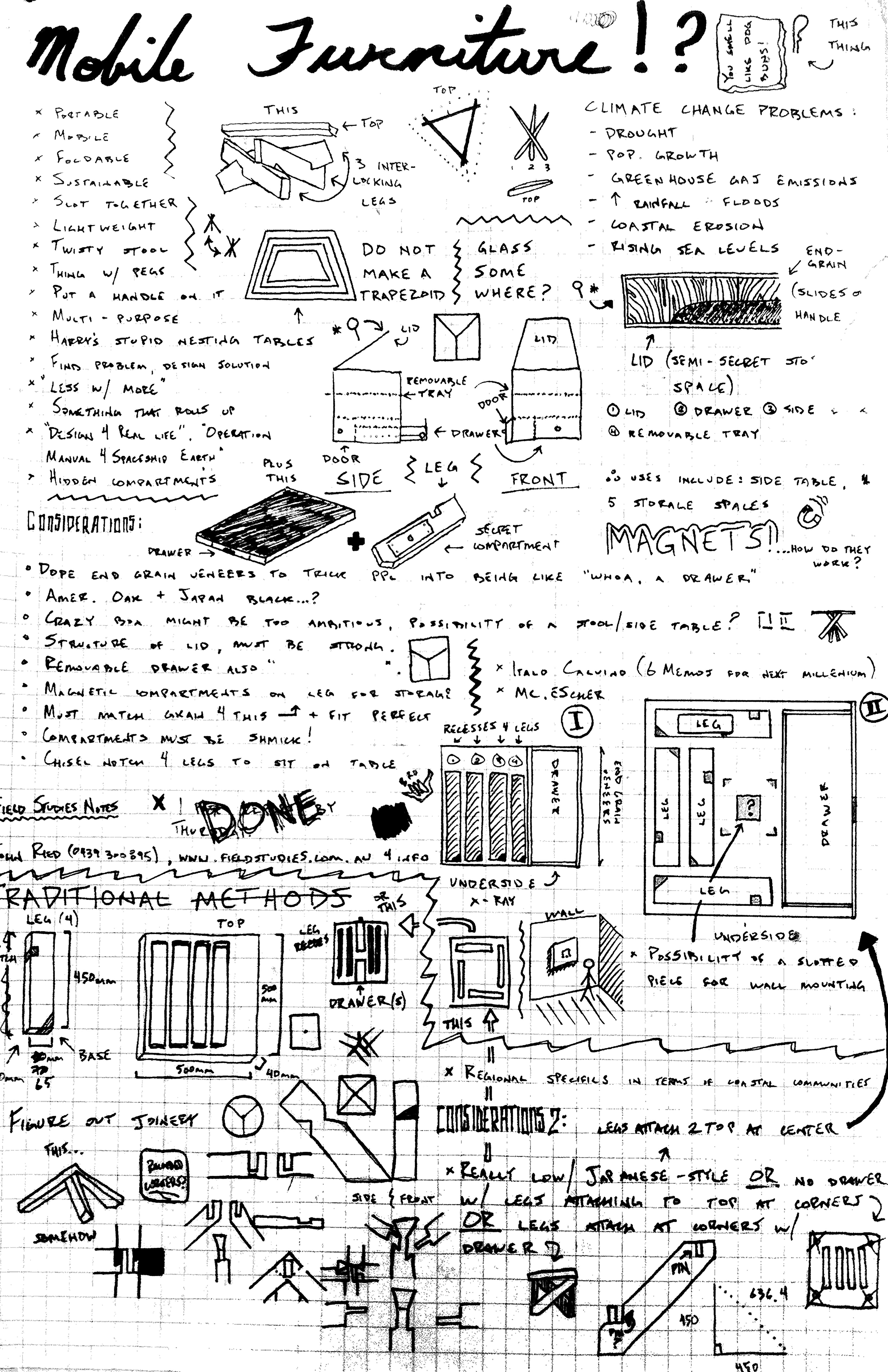

Plywood, ball-catches & pen and ink drawings (348 x 360 x 360 mm) Some of the themes recurring in my work revolve around comfort, mobility, static versus nomadic cultures and the idea of what “home” really is. So, when I was first presented with this “Environmental Studies” project, I thought … what a great opportunity to employ some of my previous research in a true-to-life scenario. First and foremost, I thought of a piece of furniture that would be small, lightweight and portable. I then elaborated on these original ideas to incorporate a furniture object with multiple functions, something that comes in a flat-pack and easy to assemble design. As a result the Nomad was produced, an elevated surface with varying functions that virtually anyone can assemble and disassemble in an instant.

